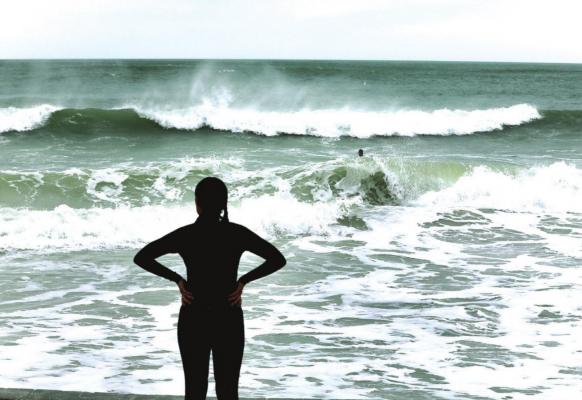Hurricane season: How long will it stay quiet?
FORT LAUDERDALE, Fla. — After a furious start to hurricane season, an eerie calm reigns over the tropics.
No storms have appeared in the Atlantic since Tropical Storm Elsa struck northwest Florida two weeks ago. And nothing is expected for another week or more, as a global climate system causes air to sink over the Atlantic, suppressing the formation of tropical storms or hurricanes.
The tranquility across a region that produces some of the world’s most violent storms won’t last, of course, especially with most experts predicting a busy season. The tropics typically start generating producing more storms in early August, as patches of disturbed weather roll off the west African coast, with storm formation reaching a peak around Sept. 10 and only falling to pre-peak conditions by late October. The current peaceful condi
The current peaceful conditions over the Atlantic result from an atmospheric phenomenon that’s generating storms in the Pacific, said Phil Klotzbach, research scientist for Colorado State University’s Tropical Meteorology Project. Known as the Madden-Julian oscillation, it’s an atmospheric teeter-totter that causes air to rise in one region of the globe and to descend in the other.
Currently, it’s causing air to ascend over the Pacific Ocean, increasing storm activity, and to sink over the Atlantic, reducing the production of storms. In addition, storm formation over the Atlantic is being suppressed by strong vertical wind shear, which prevents the formation of the large-scale structures needed for the formation of tropical storms and hurricanes.
“There’s a very large area of rising motion and disturbed weather and multiple tropical cyclones in the western Pacific,” said Michael Brennan, branch chief of the hurricane specialist unit at the National Hurricane Center. “When that happens, the typical pattern in the Atlantic is a sinking motion and large-scale unfavorable conditions for a lot of tropical cyclone activity.”
He said the storm-suppressing pattern will continue for at least the next week or so. Klotzbach is a bit more optimistic, predicting it will last another 10-14 days.
The absence of storms is not unusual this early in hurricane season, experts say. What’s unusual is the large number of storms that formed near the beginning of the season. Starting in May, with a storm that formed before the “official” June 1 opening day, the season saw five named storms, including three that struck the United States, and one hurricane.
At times in June, the National Hurricane Center’s online storm tracker appeared so crowded with storms and potential storms that meteorologists observed that it resembled a storm map from the September peak of the season.
Another factor suppressing storm formation is the presence of dry, dusty air from Africa, said AccuWeather Senior Meteorologist Dan Kottlowski. This dry air, which creates conditions contrary to the humid environment conducive to the birth of storms, is common in July and one reason the month sees relatively few storms.
“The past few days, and current trends, suggest the combination of vertical wind shear over key areas of the Atlantic and the persistent dry air and dust from Africa will limit or perhaps even prevent tropical development for the rest of July,” Kottlowski said.

